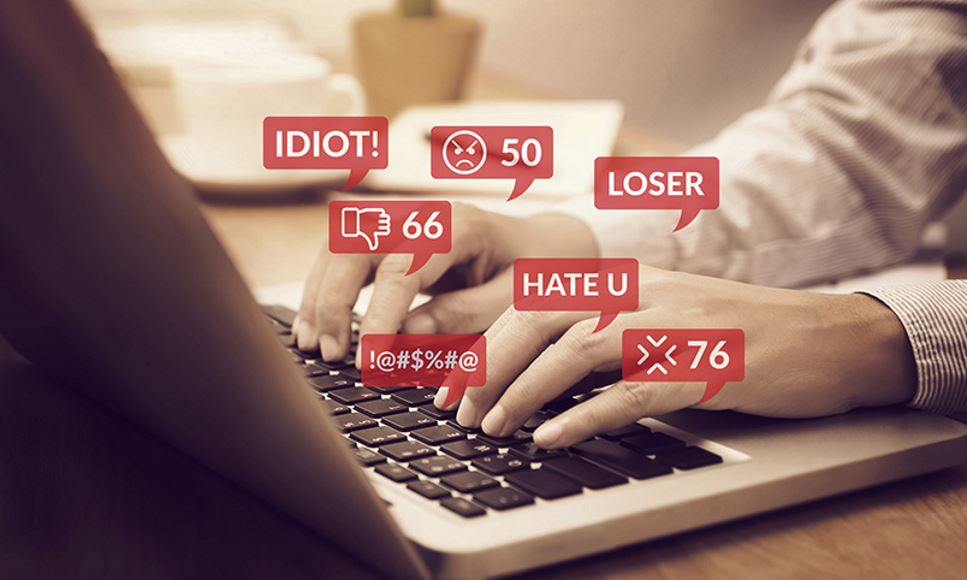
By Lauren Fox
Social media platforms provide opportunities to engage — whether it be through a community with a common interest or experience, a campaign built around a cause or goal, or a conversation centered on a specific topic — and lend a global platform for civil discourse and dialogue.
Unfortunately, there also are those who exploit this opportunity in order to stir the pot or seek attention. The first step to dealing with negativity is to determine whether the feedback is constructive criticism or an antagonistic attack. Overly aggressive tone or posts that are off-topic or unnecessarily controversial are generally the marks of a cyber-bully. These should not be confused with critics, who offer respectful discourse despite disagreeing or have a legitimate complaint. Rather, cyber-bullies of the worst order (known as trolls) are intent on doing damage to their victims’ brand or image.
Online opposition often is more passive-aggressive than direct conflict or face-to-face disagreement, and blogs and social platforms make it easy for some to channel their inner bully. Whether due to opposing views, jealousy or pure boredom, these individuals take to social networks with the goal of enraging, rather than engaging, through online activities that range from tactless tweets and comments to blitzs of unkind and even vulgar remarks and posts.
Here are some tactics for dealing with negativity online:
Stop It Before It Starts
If you don't already have a commenting policy on your blog or social media page, write one now. A strong commenting policy clearly states what will and will not be tolerated and expected actions against violators. For an example, see the Stone Soup comments policy (located on the right side of this page). The notion that online comments should never be moderated or dissenters blocked is often confused with the general recommendation to encourage constructive online discourse — and anyone on the receiving end of online bullying should feel empowered to protect themselves.
Take the High Road
It may sound counterintuitive, but maintaining a positive and approachable tone as you thank commenters for their input, even if you disagree, can help neutralize the situation and give your fans another reason to support you. This is especially effective with critics who are focused on an issue, rather than launching a personal attack. You needn't continue to acknowledge the same critic over and over. If he or she continues to post negative comments, the line between criticism and harassment has been crossed. Skip to steps 4 and 5.
Correct Misinformation
Cyber-bullies often perpetuate misinformation or intentionally skew data in order to fit their agenda and gain traction. If this is the case, address misinformation by sticking to the facts (and ignoring their rudeness). You probably won’t change the bully's mind, but in the end, your image or brand will prevail among those watching and you may even gain new supporters.
Ignore, Ignore, Ignore
Trolls take pleasure in name-calling and posting rude comments just to see how their victims respond. Don't give them the satisfaction of a knee-jerk reaction, which will only encourage them. Instead, bite your tongue. The troll likely will get bored and go elsewhere. It also will demonstrate to other bullies that you will not stoop to their level. If abuse is occurring on a platform where you can control the post, such as Facebook, hide it from your feed and get familiar with the privacy settings and options for the social networks you use, such as requiring approval for tags, mentions and wall posts. In addition, many platforms such as LinkedIn allow community members to flag comments as inappropriate.
Ban or Block Them
This often is considered a last-ditch effort since it means losing a follower and potentially alienating others, but blocking certain users can be an effective way to prevent them from engaging with you. For a troll whose comments tread into harassment territory, report the user to the platform's safety center. (And in the case of a physical threat against you or others, take a screenshot and call the police.)
Just as in real life, some bullies in the virtual world don't recognize their behavior as inappropriate. They may justify it as "activism" or claim that participating in social media means you accept the risk of being criticized. While many social media platforms are indeed public, they are not an open invitation to hurl abuse at people, no matter how strongly one may disagree with another's views.
If you see someone being attacked, one way to lend support without getting involved is by engaging with the victim outside of the dispute, such as "liking," "favorite-ing" or retweeting their posts. For the more stouthearted social engager, an intermediary comment ("I can see both your points and there are many perspectives to consider") or even a direct callout on bad behavior ("Whoa, that is not cool") can have an enormous impact on an otherwise intimidating interaction.
For those who find themselves a target of negativity, keep your chin up. Follow these tips and remember: The more time you spend interacting with a hater, the less time you have for engaging with your true fans and supporters.
This article originally appeared in Food & Nutrition Magazine®.
References
Join the Academy
Members of the Academy of Nutrition and Dietetics receive exciting benefits including complimentary continuing professional education opportunities, discounts on events and products in eatrightSTORE.org, invitations to exclusive members-only events and more!
